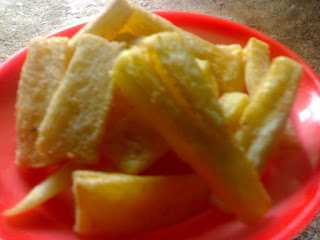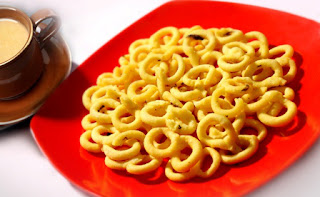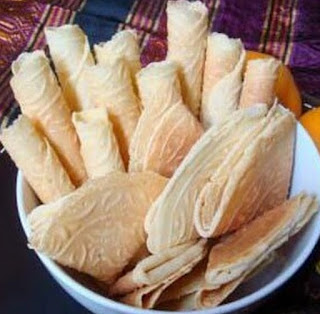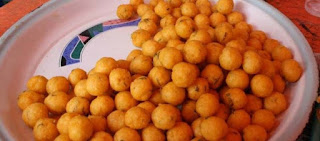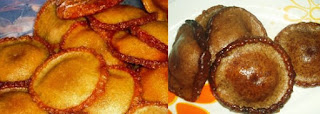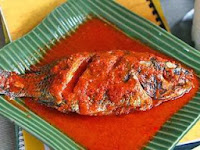PENDAHULUAN
1.1
Latar Belakang
Di desa tempat tinggal penulis Sawah Cangkiang, Lubuak nan Dalam dan Perhentian Bendi sangat banyak pengusaha kerupuk (home industry) lebih kurang 200 kepala
keluarga. Usaha ini merupakansuatu mata
pencaharian bagi mereka untuk memenuhi kebutuhan keluarga agar tetap bertahan hidup.
Curah hujan yang cukup tinggi
membuat para pengusaha home industrykerupuk mengalami
kemacetan bahkan ada yang gulung tikar.
Dalam proses pengeringan kerupuk pengusaha home industry
kerupuk memanfaatkan cahaya matahari, sehingga pada musim penghujan proses
produksi tidak berjalan dengan lancar.
Dari fakta di atas penulis menemukan inovasi baru membuat alat efisien untuk mengeringkan kerupuk. Alat ini tidak tergantung pada cuaca walaupun musim hujan proses produksi tetap berjalan lancar.
Alat efisien tidak membutuhkan biaya yang banyak sehingga harganya dapat
terjangkau oleh masyarakat ekonomi
menengah kebawah (ekonomi lemah).
Pembuatan alat ini juga sangat mudah tidak membutuhkan tenaga yang banyak
sehingga dapat dilakukan oleh 1 orang.
Maka dengan
adanya alat ini mudah-mudahan ekonomi masyarakat tetap stabil.
1.2
Batasan Masalah.
1.2.1
Cara membuat alat efisien untuk
mengeringkan kerupuk.
1.2.2
Cara menggunakan alat efisien untuk
mengeringkan kerupuk.
1.3
Rumusan Masalah
1.3.1
Bagaimana cara membuat alat efisien
untuk mengeringkan kerupuk?
1.3.2
Bagaimana cara menggunakan alat efisien
untuk mengeringkan kerupuk?
1.4
Tujuan Penelitian
1.4.1
Untuk mengetahui cara membuat alat efisien untuk mengeringkan kerupuk.
1.4.2
Mengetahui cara menggunakan alat efisien
untuk mengeringkan kerupuk.
1.5
Ruang Lingkup
Cara membuat dan menggunakan alat efisien
untuk mengeringkan kerupuk.
1.6
Metode Pengumpulan Data
Deskriptif dengan melakukan
eksperimen serta observasi.
1.7
Sistematika Penulisan
Observasi lansung ketempat pengusaha home industry
kerupuk kemudian menemukan inovasi baru. Setelah itu menyiapkan bahan dan alat.
Terakhir merakit alat dan menggunakan
TEORI DASAR
2.1 Kajian Teori
2.1.1
Pengertian alat
Defenisi kata alat menurut Kamus Besar Bahasa
Indonesia (KBBI) adalah: benda yang dipakai untuk mengerjakan sesuatu; benda
yang dipakai untuk mencapai maksud; perlengkapan; dan benda Budaya yang
dikembangkan manusia dalam usahanya memenuhi segala macam kebutuhan hidupnya,
sebagai penyambung keterbatasan organismenya.
2.1.2 Pengertian efisien
Defenisi kata efisien menurut Kamus Besar Bahasa
Indonesia (KBBI) adalah tepat atau sesuai untuk mengerjakan (menghasilkan)
sesuatu ( dengan tidak membuang-buang waktu, tenaga, dan biaya); mampu
menjalankan tugas dengan tepat, cermat dan berdaya guna.
Defenisi
Kerupuk atau krupuk menurut Wikipedia indonesia
adalah makanan ringan yang dibuat dari adonan tepung atau bahan dasar cereal (
penghasil karbohidrat ) dicampur bahan perasa seperti udang atau ikan. Kerupuk dibuat dengan mengukus adonan
sebelum dipotong tipis-tipis, dikeringkan di bawah sinar matahari dan digoreng dengan minyak goreng.
Kerupuk bertekstur garing dan sering dijadikan pelengkap untuk berbagai
makanan seperti nasi goreng dan gado-gado.Kerupuk biasanya
dijual di dalam kemasan yang belum digoreng.
2.1.4 Pengertian Mengeringkan
Pengertian mengeringakan menurut Kamus Besar Bahasa Indonesia
(KBBI) adalah menjemur supaya kering,dengancaradiangin-anginkan.
2.2 Kerangka Berfikir
2.2.1
Alat Efisien
Alat efisien untuk
mengeringkan kerupuk adalah benda berdaya guna yang sesuai untuk mengeringkan
kerupuk (berbagai jenis kerupuk dengan berbagai ukuran) hemat tenaga, dan biaya
dan dapat berproduksi kapan saja tanpa menghiraukan cuaca.
Kerupuk diletakkan ke
tempat penjemuran, hanya dengan mengontrol nyala api kemudian di biarkan sampai lebih kurang 2 jam (sampai kering).
2.2.2 Mengeringkan kerupuk
Jika mengeringkan kerupuk dengan sinar matahari membutuhkan yang di
butuhkan cukup lama sampai 2 hari atau lebih tergantung cuaca. Maka dari itu penulis membuat seperangkat alat yang
sederhana mampu mengeringkan kerupuk lebih cepat dan hasil memuaskan tanpa menghiraukan cuaca.
2.3 Pertanyaan-Pertanyaan Penelitian
2.3.1
Bahan apa saja yang digunakan untuk
membuat alat efisien mengeringkan kerupuk?
2.3.2
Alat apa saja yang diperlukan untuk
membuat alat efisien mengeringkan kerupuk?
2.3.3
Apa saja langkah-langkah untuk membuat
alat efisien mengeringkan kerupuk?
2.3.4
Bagaimana cara menggunakan alat efisien
untuk mengeringkan kerupuk
METODE
PENELITIAN
3.1 Tujuan
Khusus Penelitian
Tujuan
khusus penelitian ini adalah membuat alat efisien untuk mengeringkan kerupuk.
3.2 Metode
dan Desain Penelitian
Metode yang digunakan untuk
penelitian ini adalah metode deskriptif yaitu untuk menggambarkan cara
pembuatan dan cara penggunakan alat efisien untuk mengeringkan kerupuk.
3.3 Pelaksanaan
Penelitian
3.3.1 Tanggal
Penelitian
Penelitian ini dilakukan pada
tanggal 1 s/d 17 Maret 2011
3.3.2 Tempat
Penelitian
Penelitian
dilakukan ditempat tinggal penulis yaitu Sawah Cangkiang, Lubuak nan Dalam dan
Perhentian Bendi Jorong Koto Panjang Kenagarian Muaro Paneh Kecamatan Bukit
Sundi Kabupaten Solok Provinsi Sumatera Barat.
3.4
Populasi dan
Sampel
3.4.1
Populasi
Populasi dalam penelitian ini adalah semua jenis kerupuk
dalam berbagai ukuran dan bentuk.
3.4.2
Sampel
Sampel dalam penelitian ini adalah kerupuk ubi dengan
diameter 14 cm dan bentuk bulat.
3.5
Prosedur
3.5.1
Menyedikan Bahan dan Peralatan
3.5.1.1
Bahan
(1)
Plat alumunium 1 lembaran
(2)
Pipa alumunium 22
batang
(3)
Besi 6 (50 cm) 50
batang
(4)
Paku panjang ¾ 100 buah
(5)
Kayu (lae) 22 batang
(6)
Kipas angin 1 buah
(7)
Kawat kasa diameter 1,3 cm
(8)
Colokan listrik 1 buah
(9)
Triplek 2meter
(10)
Batu 3
buah
(11)
Bahan bakar daunan
kering, ketas bekas, kayu, sakam, kompor dll
3.5.1.2
Peralatan
(1)
Palu
(2)
Gergaji
(3)
Gunting seng
(4)
Las karbit
3.5.2
Proses Pembuatan Alat Efisien
3.5.2.1
Pengolahan bahan
v Pembuatan pin
penjemuran
§ kayu dipotong dengan ukuran 80 cm sebanyak 40 buah untuk panjang bingkai dan dipotong dengan ukuran30 cm sebanyak 40 buah untuk lebar bingkai.
§ kawat diameter 1,3 cm di potong sampai menutupi kayu
membentuk wadah penjemuran sebanyak 10 helai
v
Pembuatan tungku pembakaran
§ Pipa alumunium
dipotong dengan panjang 27 cm sebanyak 22 batang.
§ Plat alumuniumdipotong dengan ukuran panjang 50 dan lebar 20 cm
sebanyak 1 lembaran untuk bagian atas dan dipotong dengan ukuran panjang 70 cm
dan lebar 40 cm sebanyak 1 lembaran untuk bagian bawah.
v
Pembuatan kotak pengeringan
§
Triplek di potong dengan ukuran 100 cm x 33 cm sebanyak 2
lembar untuk bagian samping kanan dan kiri, lalu dipotong dengan ukuran 80 cm x
50 cm sebanyak 2 lembar untuk bagian atas dan bawah, terakhir dipotong dengan
ukuran 50 cm x 33 cm sebanyak 1 lembar untuk bagian belakang.
3.5.2.2
Cara perakitan
v Kayu yang telah
dipotong dibentuk seperti persegi panjang (bingkai), dengan meletakkan besi 6di atasnya.
v Kemudian kawat kasa diletakkan diatas besi 6dan
dipakukan dengan ukuran kayu yang sama sehingga membentuk bingkai dua lapis
v Plat
alumunium bagian bawah dilipat 10 cm
setiap sisi
v Pipa dihubungkan
ke plat bagian atas dan bawah dengan cara dilas
v Triplek
dipakukan hingga membentuk kotak yang dua sisi berhadapannya terbuka.
v Satu sisi
berhadapanya ditutup dengan triplek 50 cm x 33 cm dan diberi lubang-lubung
sirkulasi udara (secukupnya)
v Kotak
pengeringan dihubungkan dengan tungku pembakaran
3.5.3
Cara Menggunakan
3.5.3.1
Kerupuk yang telah selesai dicetak diletakkan pada pin
penjemuran.
3.5.3.2
Kemudian susun pin kedalam kotak pengeringan
3.5.3.3 Kotak pengeringan dibungkan dengan tungku pembakaran dengan
jarak yang tidak terlalu jauh
3.5.3.4 Tungku pembakaran ditinggiklan darah tanah dengan cara
meletakkannya diatas tungku batu.
3.5.3.5
Bahan bakar dimasukkan pada tungku batu, nyala api diatur
agar tetap dalam keadaan panas yang stabil.
3.5.3.6
Kipas angin dihidupkan lalu diarahkan ke pipa.
3.5.3.7
Kurang lebih 2 jam kerupuk akan kering dan siap dipasarkan.
3.6
Teknik Analisis
Data
Teknik analisi data adalah
pegambilan data oleh penulis dalam melakukan penelitian, ditampilkan dalam
bentuk tabel berikut :
Tabel 3.6.1 Analisis data, Mengeringkan kerupuk secara manual cuaca
mendukung
|
No
|
Kriteria
|
Hasil
|
|
1.
|
Nama kerupuk
|
|
|
2.
|
Diameter kerupuk
|
|
|
3.
|
Tebal kerupuk
|
|
|
4.
|
Ukuran pin
penjemuran
|
|
|
5.
|
Jarak pengeringan
antar banjar
|
|
|
6.
|
Jarak penjemuran
antar shaf
|
|
|
7.
|
Perubahan kerupuk setelah 1 jam
|
|
|
8.
|
Waktu pengeringan
|
|
|
9.
|
Jumlah kerupuk
yang kering dalam 1 hari jika cuaca mendukung
|
|
|
10.
|
Bentuk kerupuk
setelah kering
|
|
|
11.
|
Warna kerupuk
setelah kering
|
|
|
12.
|
Jumlah tenaga
|
|
|
13.
|
Upah
tenaga kerja
|
|
Tabel 3.6.2 Analisis data, Mengeringkan kerupuk secara manual
cuaca tidak mendukung (musim hujan)
|
No
|
Kriteria
|
Hasil
|
|
1.
|
Nama kerupuk
|
|
|
2.
|
Diameter kerupuk
|
|
|
3.
|
Tebal kerupuk
|
|
|
4.
|
Ukuran pin
penjemuran
|
|
|
5.
|
Jarak pengeringan
antar banjar
|
|
|
6.
|
Jarak penjemuran
antar shaf
|
|
|
7.
|
Perubahan kerupuk setelah 1 jam
|
|
|
8.
|
Waktu pengeringan
|
|
|
9.
|
Jumlah kerupuk
yang kering dalam 1 hari jika cuaca tidak mendukung
|
|
|
10.
|
Bentuk kerupuk
setelah kering
|
|
|
11.
|
Warna kerupuk
setelah kering
|
|
|
12.
|
Jumlah tenaga
|
|
|
13.
|
Upah
tenaga kerja
|
|
Tabel 3.6.3Analisis data, Mengeringkan
kerupuk memakai alat efisien (Observasi)
|
No
|
Kriteria
|
Hasil
|
|
1.
|
Nama kerupuk
|
|
|
2.
|
Diameter kerupuk
|
|
|
3.
|
Tebal kerupuk
|
|
|
4.
|
Ukuran pin
penjemuran
|
|
|
5.
|
Jarak pengeringan
antar banjar
|
|
|
6.
|
Jarak penjemuran
antar shaf
|
|
|
7.
|
Perubahan kerupuk setelah 1 jam
|
|
|
8.
|
Waktu pengeringan
|
|
|
9.
|
Jumlah kerupuk
yang kering dalam 1 hari jika cuaca mendukung atau tidak mendukung
|
|
|
10.
|
Bentuk kerupuk
setelah kering
|
|
|
11.
|
Warna kerupuk
setelah kering
|
|
|
12.
|
Jumlah tenaga
|
|
|
13.
|
Upah
tenaga kerja
|
|
Tabel 3.6.4 Analisis data, perbandingan antara mengeringkan
kerupuk secara manual dan memakai alat efisien (Obsevasi)
|
No.
|
Kriteria
|
Manual
|
Efisien
|
|
Cuaca
mendukung
|
Cuaca tidak
mendukung (musim hujan)
|
|
1.
|
Jumlah tenaga
kerja
|
|
|
|
|
2.
|
Waktu kerja
dalam 1 hari
|
|
|
|
|
3.
|
Upah tenaga
kerja
|
|
|
|
|
4.
|
Jumlah kerupuk
yang selesai
|
|
|
|
PEMBAHASAN HASIL PENELITIAN
4.1 Subjek Penelitian
Penelitian ini adalah rekayasa. Tujuannya
adalah menemukan ide baru untuk membuat alat mengeringkan kerupuk, Alat dan
bahan yang digunakan cukup komplek. Prosedur kerja, cara merakit alat dan cara
penggunaan alat juga dicantumkan pada bab III.
4.2 Deskripsi Hasil
4.2.1
Gambar dan Penjelasan
4.3 Pembahasan Hasil
Pada teknik analisa data yang dibahas
adalah kemampuan mengeringkan kerupuk secara manual cuaca mendukung dan cuaca
tidak mendukung dengan menggunakan alat efisien, pembahasan ditampilkan dalam
bentuk tabel berikut :
4.3.1
Hasil analisa data
mengeringkan kerupuk secara manualcuaca mendukung (Observasi)
Tabel 4.3.1. Hasil analisa data, Mengeringkan kerupuk
secara manual cuaca mendukung
|
No
|
Kriteria
|
Hasil
|
|
1.
|
Nama kerupuk
|
Kerupuk ubi
|
|
2.
|
Diameter kerupuk
|
14 cm
|
|
3.
|
Tebal kerupuk
|
1 mm
|
|
4.
|
Ukuran pin penjemuran
|
80 cm x 30 cm (2400)
|
|
5.
|
Jarak pengeringan antar banjar
|
0,66 cm
|
|
6.
|
Jarak penjemuran antar shaf
|
1,33 cm
|
|
7.
|
Perubahan kerupuk setelah 1 jam
|
Belum berubah
|
|
8.
|
Waktu pengeringan
|
8 jam
|
|
9.
|
Jumlah kerupuk yang kering dalam 1 hari jika cuaca mendukung
|
720 kerupuk
|
|
10.
|
Bentuk kerupuk setelah kering
|
Retak-retak
|
|
11.
|
Warna kerupuk setelah kering
|
Putib abu-abu
|
|
12.
|
Jumlah tenaga
|
3 orang
|
|
13.
|
Upah tenaga kerja per orang
|
Rp. 20.000
|
4.3.1.1
Keterangan Tabel 4.3.1
4.3.1.1.1
Kerupuk yang dikeringkan adalah kerupuk
Ubi
4.3.1.1.2
Diameter kerupuk adalah 14 cm.
4.3.1.1.3
Tebal kerupuk adalah 1 mm.
4.3.1.1.4
Ukuran pin penjemuran adalah P x L = 160
cm x 60 cm adalah 9600 cm2.
4.3.1.1.5
Jarak penjemuran antar kerupuk dalam 1
banjar adalah 0,66 cm.
4.3.1.1.6
Jarak penjemuran antar shaf adalah 1,33
cm
4.3.1.1.7
Perubahan kerupuk, setelah 1 jam belum
ada perubahan.
4.3.1.1.8
Waktu pengeringan kerupuk adalah selama
8 jam.
4.3.1.1.9
Jumlah kerupuk yang kering dalam 1 hari
jika cuaca mendukung adalah sebanyak 720 kerupuk karena mereka memproduksi 720
kerupuk.
4.3.1.1.10
Bentuk kerupuk, ada sebagian yang
retak-retak karena terkena panas yang berlebihan.
4.3.1.1.11
Warna kerupuk setalah kering adalah
putih keabu-abuan
4.3.1.1.12
Jumlah tenaga kerja dalam 1 hari adalah
3 orang
4.3.1.1.13
upah pekerja dalam 1 hari Rp.20.000.
jika 3 0rang Rp. 60.000/hari.
4.3.1.2
Rumus
4.3.1.2.1 Rumus mencari banyak kerupuk yang dapat dikeringkan dalam 1 pin penjemuran
adalah hasil bagi Panjang pin dengan
diameter (banjar) kerupuk dan lebar pin dengan diameter kerupuk (shaf)
Banyakkerupuk yang dapatdikeringkan di
pin denganukuran 80 cm x 30 cm
|
Jadi pada pin dengan panjang 160 cm dan lebar 30 cm dapat
dijemur kerupuk sebanyak 4 x 11 = 44 kerupuk. 4 kerupuk bershaf dan 11 kerupuk
berbanjar. Sisa dari hasil tersebut merupakan total jarak penjemuran kerupuk.
4.3.1.2.2 Cara mencari jarak penjemuran antar banjar adalah panjang pin penjemuran
dikurangi banyak kerupuk yang dikalikan dengan diameter kerupuk.
Jadi sisa dari panjang pin adalah 6 cm :
9 = 0,66 cm (6,6 mm) yang merupakan jarak antar kerupuk dalam 1 banjar. 9 didapat
dari rongga antar kerupuk.
4.3.1.2.3 Mencari jarak penjemuran antar shafadaalah Lebar pin penjemuran dikurangi
banyak kerupuk yang dikalikan dengan diameter kerupuk.
Jadi sisa dari lebar pin adalah 4 cm : 3 = 1,33 cm yang
merupakan jarak antar kerupuk dalam 1 shaf. 3 didapat dari rongga antar
kerupuk.
4.3.1.3
Kesimpulan Tabel 4.3.1
Untuk mengeringkan kerupuk di pin
penjemuran seluas 9600cm dalam waktu 8 jam jika cuaca mendukung. Membutuhkan 3
orang pekerja dengan upah Rp. 20.000/orang jadi Rp.60.000 untuk 3 orang. Hasil
pengeringan retak-retak karena panas yang berlebihan.
4.3.2
Hasil Analisa data mengeringkan kerupuk secara manual cuaca tidak
mendukung (Observasi)
Tabel 4.3.2 hasil analisa data
mengeringkan kerupuk secara manual cuaca tidak mendukung
|
No
|
Kriteria
|
Hasil
|
|
1.
|
Nama kerupuk
|
Kerupuk ubi
|
|
2.
|
Diameter kerupuk
|
14 cm
|
|
3.
|
Tebal kerupuk
|
1 mm
|
|
4.
|
Ukuran pin penjemuran
|
80 cm x 30 cm (2400)
|
|
5.
|
Jarak pengeringan antar banjar
|
0,66 cm
|
|
6.
|
Jarak penjemuran antar shaf
|
1,33 cm
|
|
7.
|
Perubahan kerupuk setelah 1 jam
|
Belum berubah
|
|
8.
|
Waktu pengeringan
|
16 jam
|
|
9.
|
Jumlah kerupuk yang kering dalam 1 hari jika cuaca tidak mendukung
|
200 kerupuk
|
|
10.
|
Bentuk kerupuk setelah kering
|
Retak-retak
|
|
11.
|
Warna kerupuk setelah kering
|
Putih abu-abu
|
|
12.
|
Jumlah tenaga
|
1 orang
|
|
13.
|
Upah tenaga kerja per orang
|
Rp. 20.000
|
4.3.2.1 Keterangan Tabel 4.3.2
Keterangan no. 1 s/d 7 dan 10 s/d 11
dan 13 sama. Terdapat perbedaan pada no. 8,9 dan 12 sebagai berikut :
4.3.2.1.8
Waktu pengeringan adalah 16 jam, berarti
2 x jam kerja cuaca mendukung.
4.3.2.1.9
Jumlah kerupuk yang kering dalam 1 hari
jika cuaca tidak mendukung adalah sebanyak 200 kerupuk, sisanya akan kering
esok hari.
4.3.2.1.12
Jumlah tenaga kerja 1 orang untuk 2 hari
kerja.
4.3.2.2 Kesimpulan Tabel 4.3.2
Untuk mengeringkan kerupuk di pin penjemuran seluas 9600 cm2
dalam waktu 16 jam atau 2 kali jam kerja ketika cuaca mendukung. Secara manual cuaca tidak mendukung
dibutuhkan 1 orang pekerja dalam 2 kali jam kerja dengan upah 2 x Rp. 20.000 =
Rp. 40.000 memperoleh hasil yang sama.
4.3.2.3 Rumus
Dapat menggunakan rumus yang sama
akan diperoleh hasil yang sama.
4.3.3 Hasil analisa data mengeringkan kerupuk
dengan alat efisien
Tabel4.3.3. Hasil analisa data, Mengeringkan kerupuk
memakaialat efisien (Observasi)
|
No
|
Kriteria
|
Hasil
|
|
1.
|
Nama kerupuk
|
Kerupuk ubi
|
|
2.
|
Diameter kerupuk
|
14 cm
|
|
3.
|
Tebal kerupuk
|
1 mm
|
|
4.
|
Ukuran pin penjemuran
|
80 cm x 30 cm
|
|
5.
|
Jarak pengeringan antar banjar
|
2,5 cm
|
|
6.
|
Jarak penjemuran antar shaf
|
2 cm
|
|
7.
|
Perubahan kerupuk setelah 1 jam
|
Kerupuk tidak lengket
|
|
8.
|
Waktu pengeringan
|
2 jam
|
|
9.
|
Jumlah kerupuk yang kering dalam 1 hari jika cuaca
mendukung atau tidak mendukung
|
400 kerupuk
|
|
10.
|
Bentuk kerupuk setelah kering
|
Baik tidak ada yang retak
|
|
11.
|
Warna kerupuk setelah kering
|
Putih keabu-abuan
|
|
12.
|
Jumlah tenaga
|
1 0rang
|
|
13.
|
Upah tenaga kerja
|
Rp. 20.000
|
4.3.2.1 Keterangan Tabel 4.3.3
4.3.2.1.1
Kerupuk yang digunakan dalam penelitian
ini adalah kerupuk Ubi.
4.3.2.1.2
Diameter kerupuk adalah 14 cm.
4.3.2.1.3
Tebal kerupuk adalah 1 mm.
4.3.2.1.4
Ukuran pin penjemuran yang digunakan
untuk standar analisis data adalah 80 cm x 30 cm (2400 cm2).
4.3.2.1.5
Jarak penjemuran secara berbanjar antar
kerupuk adalah 2,5 cm.
4.3.2.1.6
Jarak penjemuran secara bershaf antar
kerupuk adalah 2 cm.
4.3.2.1.7
Perubahan kerupuk setelah 1 jam kerupuk
mulai kering tidak terlalu lengket lagi.
4.3.2.1.8
Waktu pengeringan adalah 2 jam sebanyak
100 kerupuk, untuk 400 kerupuk dibutuhkan waktu 8 jam.
4.3.2.1.9
Jumlah kerupuk yang kering dalam 1 hari
jika cuaca mendukung adalah 400 kerupuk.
4.3.2.1.10
Bentuk kerupuk setelah kering adalah baik
tidak ada yang retak-retak.
4.3.2.1.11
Warna kerupuk setelah dikeringkan adalah
putih keabu-abuan.
4.3.2.1.12
Jumlah tenaga kerja adalah 1 orang.
4.3.2.1.13
Upah 1 orang pekerja dalam 1 hari adalah
Rp. 20.000.
4.3.2.2
Rumus
4.3.2.2.1
Banyakkerupuk yang dapatdikeringkan di
pin denganukuran 80 cm x 30 cm
|
Rumus mencari banyak kerupuk yang dapat dikeringkan dalam
1 pin penjemuran adalah hasil bagi
Panjang pin dengan diameter kerupuk (banjar) dan lebar pin dengan
diameter kerupuk (shaf).Jadi pada pin dengan panjang 80 cm dan
lebar 30 cm dapat dijemur kerupuk sebanyak 2 x 5 = 10 kerupuk. 2 kerupuk
bershaf dan 5 kerupuk berbanjar. Sisa dari hasil tersebut merupakan total jarak
penjemuran kerupuk.
4.3.2.2.2 Cara mencari jarak penjemuranantar banjar
Banyak kerupuk dikali diameter kerupuk dikurangi dengan
panjang pin penjemuran
Mencari jarak penjemuran antar banjar
|
Jadi sisa dari panjang pin adalah 10 cm
: 4 = 2,5 cm yang merupakan jarak antar kerupuk dalam 1 banjar. 4 didapat dari
rongga antar kerupuk.
4.3.2.2.3 Mencari jarak penjemuran antar shaf Banyak kerupuk dikali diameter kerupuk
dikurangi dengan lebar pin penjemuran
Mencarijarakpenjemuranantarshaf
|
Jadi sisa dari lebar pin adalah 2 cm : 1
= 2 cm yang merupakan jarak antar kerupuk dalam 1 shaf. 1 didapat dari rongga
antar kerupuk.
4.3.2.3
Kesimpulan Tabel 4.3.3
Untuk mengeringkan kerupuksebanyak 100
buah dengan menggunakan alat efisien dapat diselesaikan oleh 1 orang dengan dalam
waktu 2 jam.Dalam satu hari dapat melakukan
4 kali pengeringan dan menyelesaikan sebanyak 400 kerupuk dengan biaya pekerja
Rp. 20.000Proses produksi tidak bergantung pada cuaca.
4.3.4
Analisa data perbandingan mengeringkan kerupuk antara alat manual dan
efisien
Tabel 4.3.4
Hasil Analisis data, perbandingan antara mengeringkan kerupuk secara manual dan
memakai alat efisien
|
|
Kriteria
|
Manual
|
Efisien
|
|
Cuaca mendukung
|
Cuaca tidak mendukung (musim hujan)
|
|
1.
|
Jumlah tenaga kerja
|
3 orang
|
1 orang
|
1 0rang
|
|
2.
|
Waktu kerja
|
8 jam
|
16 jam
|
8 jam
|
|
3.
|
Upah tenaga kerja
|
Rp. 60.000
|
Rp. 40.000
|
Rp.20.000
|
|
4.
|
Jumlah kerupuk yang selesai
|
720 kerupuk
|
200 kerupuk
|
400 kerupuk
|
4.3.4.1
Kesimpulan Tabel 4.3.4
v Secara manual cuaca mendukung dibutuhkan 3 orang tenaga kerja dengan upah
Rp. 60.000. Dapat menyelesaikan kerupuk dalam 8 jam kerja.
v Secara manual cuaca kurang mendukung dibutuhkan 1 orang tenaga kerja
dengan upah 2 x Rp. 20.000 = 40.000. dapat menyelesaikan 200 kerupuk dalam
waktu 16 jam (2 x waktu manual cuaca mendukung).
v Alat efisien dibutuhkan 1 orang tenaga kerja dengan upah Rp. 20.000. Dapat
menyelesaikan 400 kerupuk dalam 8 jam kerja.
4.3.4.2
Kesimpulan Secara Umum
Jadi perbandingan
antara manual cuaca mendukung, manual cuaca tidak mendukung dan alat
efisien dari segi tenaga kerja adalah 3:1:1, dari segi waktu adalah 1:2:1, dari
segi upah adalah 3:2:1 dan dari segi kesiapan kerupuk adalah 3,6:1:2.
Maka, dengan memakai alat efisien hemat tenaga kerja, waktu
dan biaya serta proses produksi dapat berjalan lancar.
SIMPULAN DAN SARAN
5.1 Simpulan
5.1.1 Bahan dan Alat yang
digunakan untuk Membuat alat yang
Efisien untuk Mengeringkan
Kerupuk
5.1.1.1
Bahan
Bahan yang
digunakan adalah plat alumunium , pipa alumunium, besi 6, paku panjang ¾ , kayu
(lae), kipas angin, colokan listrik, tripleks, batu dan bahan bakar (daunan kering, ketas bekas, kayu, sakam, kompor dll)
5.1.1.2
Peralatan
Peralatan yang digunakan adalah palu, gergaji, gunting
seng dan las karbit.
5.1.2
Pengolahan Bahan
Satu pembuatan pin penjemurankayu dipotong
dengan ukuran 80 cm sebanyak 40 buah
untuk panjang bingkai dan dipotong dengan ukuran30 cm sebanyak 40 buah untuk lebar bingkaidan kawat diameter 1,3 cm di potong sampai menutupi
kayu membentuk wadah penjemuran sebanyak 10 helai. Dua, Pembuatan tungku
pembakaran pipa alumunium dipotong dengan panjang 27 cm
sebanyak 22 batang
dan plat alumuniumdipotong
dengan ukuran panjang 50 cm dan lebar 20 cm sebanyak 1 lembaran untuk bagian atas
dan dipotong dengan ukuran panjang 70 cm dan lebar 40 cm sebanyak 1 lembaran
untuk bagian bawah.
Tiga, pembuatan kotak
pengeringantriplek di potong dengan ukuran 100 cm x 33
cm sebanyak 2 lembar untuk bagian samping kanan dan kiri, lalu dipotong dengan
ukuran 80 cm x 50 cm sebanyak 2 lembar untuk bagian atas dan bawah, terakhir dipotong
dengan ukuran 50 cm x 33 cm sebanyak 1 lembar untuk bagian belakang.
5.1.3
Cara Perakitan Alat
Satu, kayu yang telah dipotong dibentuk seperti
persegi panjang (bingkai)dengan meletakkan besi 6di atasnya.
Dua, kawat kasa diletakkan
diatas besi 6dan dipakukan
dengan ukuran kayu yang sama sehingga membentuk bingkai dua lapis. Tiga, plat alumunium
bagian bawah dilipat 10 cm setiap sisi. Empat, pipa dihubungkan ke plat bagian atas dan bawah dengan cara dilas. Lima, triplek dipakukan hingga membentuk kotak yang dua sisi
berhadapannya terbuka. Enam, salah satu sisi
berhadapanya ditutup dengan triplek 50 cm x 33 cm dan diberi lubang-lubung
sirkulasi udara (secukupnya). Tujuh, kotak
pengeringan dihubungkan dengan tungku pembakaran
5.1.4 Cara menggunakan alat
Satu, kerupuk yang telah selesai dicetak
diletakkan pada pin penjemuran. Dua, susun
pin kedalam kotak pengeringan. Tiga, kotak
pengeringan dibungkan dengan tungku pembakaran dengan jarak yang tidak terlalu
jauh. Empat, tungku pembakaran ditinggiklan darah tanah
dengan cara meletakkannya diatas tungku batu.Lima, bahan
bakar dimasukkan pada tungku batu, nyala api diatur agar tetap dalam keadaan
panas yang stabil.Enam,
kipas angin dihidupkan lalu
diarahkan ke pipa.Tujuh,
kurang lebih 2 jam kerupuk akan
kering dan siap dipasarkan.
5.1.5 Hasil
v
Kesimpulan Tabel 4.3.1
Untuk mengeringkan kerupuk di pin penjemuran seluas 9600 cm dalam waktu 8 jam jika
cuaca mendukung. Membutuhkan 3 orang pekerja dengan upah Rp. 20.000/orang jadi
Rp.60.000 untuk 3 orang. Hasil pengeringan retak-retak karena panas yang
berlebihan.
v
Kesimpulan Tabel 4.3.2
Untuk mengeringkan kerupuk di pin penjemuran seluas 9600 cm2
dalam waktu 16 jam atau 2 kali jam kerja ketika cuaca mendukung. Secara manual cuaca tidak mendukung
dibutuhkan 1 orang pekerja dalam 2 kali jam kerja dengan upah 2 x Rp. 20.000 =
Rp. 40.000 memperoleh hasil yang sama.
v
Kesimpulan Tabel 4.3.3
Untuk mengeringkan kerupuk sebanyak 100 buah dengan
menggunakan alat efisien dapat diselesaikan oleh 1 orang dengan dalam waktu
2 jam. Dalam satu hari dapat melakukan 4
kali pengeringan dan menyelesaikan sebanyak 400kerupuk dengan biaya pekerja Rp.
20.000 Proses produksi tidak bergantung
pada cuaca.
v
Kesimpulan Tabel 4.3.4
·
Secara manual cuaca mendukung dibutuhkan
3 orang tenaga kerja dengan upah Rp. 60.000. Dapat menyelesaikan kerupuk dalam
8 jam kerja.
·
Secara manual cuaca kurang mendukung
dibutuhkan 1 orang tenaga kerja dengan upah 2 x Rp. 20.000 = 40.000. dapat
menyelesaikan 200 kerupuk dalam waktu 16 jam (2 x waktu manual cuaca mendukung)
·
Alat efisien dibutuhkan 1 orang tenaga
kerja dengan upah Rp. 20.000. Dapat menyelesaikan 400 kerupuk.
v
Kesimpulan Secara Umum
Jadi
perbandingan antara manual cuaca
mendukung, manual cuaca tidak mendukung dan alat efisien dari segi tenaga kerja
adalah 3:1:1, dari segi waktu 1:2:1, dari segi upah 3:2:1 dan dari segi
kesiapan kerupuk adalah 3,6:1:2.
Maka, dengan memakai alat efisien hemat tenaga kerja, waktu dan biaya
serta proses produksi dapat berjalan lancar.
5.2 Saran
5.2.1
Para remaja
·
Diharapkan menggemari kegiatan menulis dan meneliti.
5.2.2
Para peneliti (tenaga ahli)
·
Diharapkan dapat mengembangkan dan menyempurnakan alat
ini.
5.2.3
Orang tua dan guru
·
Diharapkan dapat meningkatkan dukungannya kepada
peneliti-peneliti kedepannya.
5.2.4
Pemerintah
·
Diharapkan dapat membantu agar alat ini dapat dipatenkan
atas nama penulis.





